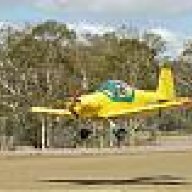-
Posts
6,616 -
Joined
-
Last visited
-
Days Won
31

Yenn replied to biggles's topic in Aircraft Incidents and Accidents

Yenn replied to biggles's topic in Aircraft Incidents and Accidents

Yenn replied to Marty_d's topic in Aircraft General Discussion

Yenn replied to biggles's topic in Aircraft Incidents and Accidents

Yenn replied to biggles's topic in Aircraft Incidents and Accidents

Yenn replied to cooperplace's topic in Aircraft Incidents and Accidents

Yenn replied to red750's topic in Aircraft Incidents and Accidents

Yenn replied to red750's topic in Aircraft Incidents and Accidents

Yenn replied to rtyuiop's topic in AUS/NZ General Discussion

Yenn replied to rtyuiop's topic in AUS/NZ General Discussion

Yenn replied to rtyuiop's topic in AUS/NZ General Discussion

Yenn replied to BirdDog's topic in AUS/NZ General Discussion

Yenn replied to Garfly's topic in AUS/NZ General Discussion

Yenn replied to red750's topic in Aircraft Incidents and Accidents

